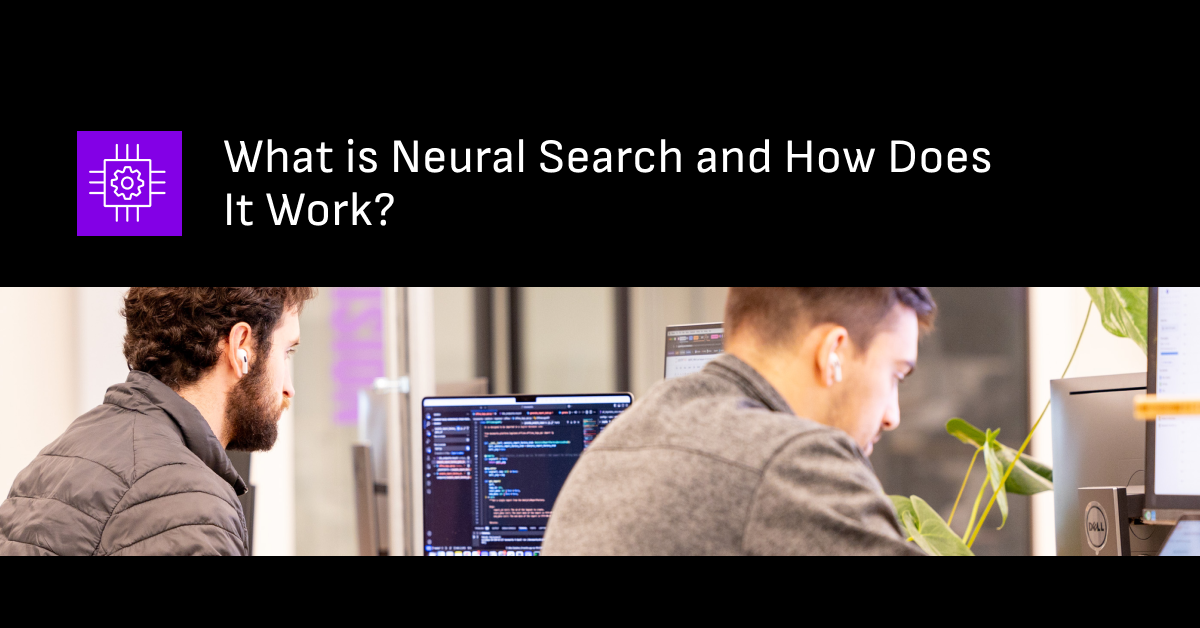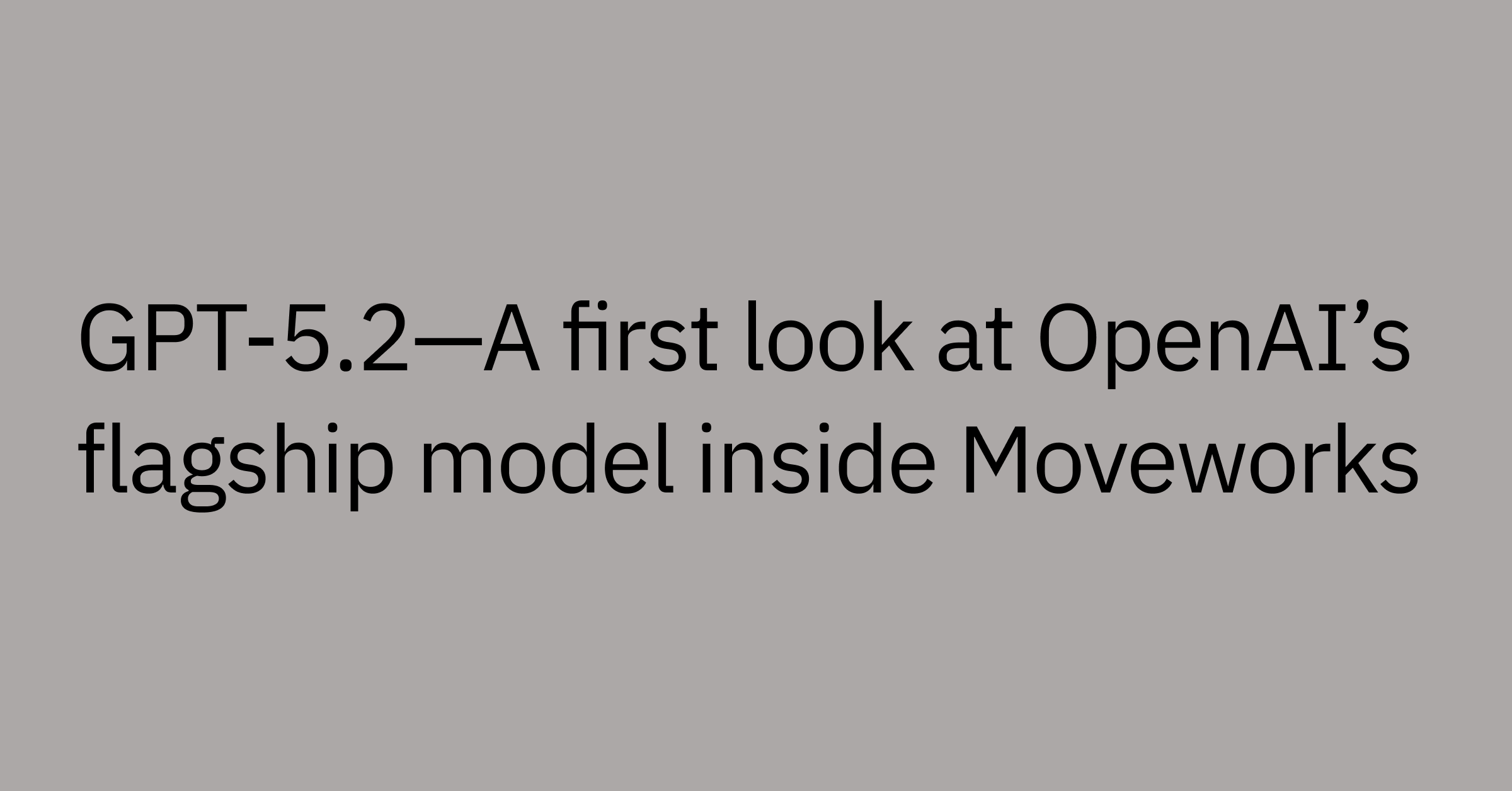Table of contents
Highlights
- Neural search uses deep learning to interpret the meaning behind queries, returning contextually relevant results instead of keyword matches.
- It generates semantic embeddings to identify relationships, continuously improving through feedback loops.
- Paired with retrieval-augmented generation (RAG) and agentic reasoning, it produces contextual, goal-oriented answers across enterprise data.
- Moveworks Enterprise Search applies neural search and RAG to deliver accurate, personalized insights across all business systems.
Ever try to use your organization's search tool, only to get outdated results, poorly matched keywords, waste 30 minutes hunting across Google Drives – to just end up pinging a coworker for the answer?
Blame outdated enterprise search methods.
Traditional enterprise search is broken. Information lives in too many places, and keyword-based search just isn’t cutting it anymore. It often returns inaccurate or irrelevant results, which leads to duplicated work, slower decisions, and frustrated teams.
According to a recent study, employees can spend at least half an hour every day looking for information. In some cases, that number exceeds 2 hours. That’s more than a full workday each week lost to inefficient search tools.
Neural search offers a smarter solution. By understanding meaning — not just matching keywords — it surfaces the right information faster, even when it’s scattered across disconnected systems.
Let’s look at how neural search works, how it compares to traditional search and advanced approaches like retrieval-augmented generation (RAG), and how it can deliver the kind of intuitive, enterprise-ready search experience your teams need.
What is neural search?
Neural search is an AI-powered method that uses deep learning — specifically, neural networks — to understand the meaning behind a search query and return the most relevant results.
Rather than relying on exact keyword matches, neural search converts both the query and the content into numerical representations called embeddings (vectors). These embeddings capture semantic relationships — including intent, context, and meaning — enabling the system to find relevant information even when the wording differs.
In contrast, traditional search engines rely on keyword matching, which means they often miss the mark if users don’t phrase things exactly right. They can’t understand intent or context, so important information often stays buried.
For instance, imagine you're working for a large company and you need to find reports on "renewable energy projects" for a presentation. With a traditional search system, you might only find documents that include the exact phrase "renewable energy projects."
However, with neural search, the system understands the broader concept of renewable energy and can retrieve documents that discuss related topics, such as solar power initiatives, wind farm developments, and sustainability strategies, even if they don't explicitly use the exact search terms you entered.
Benefits of neural search
Incorporating neural search into your enterprise search solution can significantly improve your employee experience by delivering:
Faster, more accurate results
Neural search helps to reduce the time employees spend searching for relevant information by understanding user intent and context.
Instead of enduring endless back-and-forth with limited keyword based search or outdated portals, employees can use neural search through a conversational interface to get instant answers in everyday language. With proper system configuration and data quality, neural search tools can retrieve information from your internal systems to deliver grounded, accurate answers — reducing the risk of hallucinated content.
These platforms typically integrate across your enterprise ecosystem — including tools like SharePoint, Google Drive, and Confluence. So when an employee asks something like "What's our parental leave policy?", the tool doesn't just provide a generic AI generated response.
Instead, it searches across internal systems — from HR handbooks, cloud applications, and knowledge bases — and delivers grounded answers based on your company’s actual data, helping to reduce the risk of hallucinated content.
Contextually relevant, continuously improving answers
Neural search is able to make your enterprise search solution smarter over time. Since it leverages machine learning models and ongoing user interactions, it can become more accurate the more it's used. This makes it easier to identify potential content gaps and increase the relevancy of the results it provides.
Even more important, neural search engines learn the specific language of your business. They can get even better with frequent system updates and continuous data training for accuracy. Employees can then reference product titles, company-specific acronyms, or unique project names without confusing the AI search tool.
Reduced reliance on support staff
When employees can self-serve efficiently and find exactly what they need, this naturally leads to improved support ticket deflection and reduces the administrative burden placed on other departments. Instead of emailing HR or IT for answers, they can get an instant, grounded response in seconds.
Using an agentic AI solution (i.e. one that is able to automate workflows), your business can see even greater enterprise search improvements. Agentic AI can take simple support queries and incorporate intelligent automation workflows based on the request.
For example, if an employee says, “I need help setting up email,” the system is able check their device profile and automatically provide a step-by-step guide for their specific operating system and permissions. This helps eliminate time-consuming follow-up questions or the need to submit an IT ticket.
Higher-quality insights for decision-makers
When you have isolated systems, it can be challenging for your employees to locate the data that drives smart decision-making. Neural search helps break down these data silos by indexing and unifying business knowledge regardless of where it's stored.
Neural search can bring all your scattered, unstructured data (like support tickets, internal docs, and team messages) into one searchable system. This provides higher-quality insights to key decision-makers and helps them make faster, more informed choices for the business.
For example, your product team might ask, “What issues are employees experiencing with our latest software release?” Neural search can help them surface relevant support tickets, bug reports, and team discussions — even if the phrasing varies — so they can quickly spot recurring problems and address them faster.
How neural search works
Neural search solutions rely on deep neural networks that help them understand the meaning behind words and phrases — not just their literal forms. They use embeddings to convert both search queries and documents into numerical vectors that capture semantic relationships, such as intent and context.
Once your content is embedded and indexed, the system can compare these vectors to identify which pieces of information are most similar (relevant) to a given query, even if the wording is different.
How does this work? So if you search for "problems with software setup," the model can identify other documents that address similar issues, such as "troubleshooting software errors," even if they use different terminology.
RAG often leverages neural search to retrieve the most relevant documents before feeding them into a large language model (LLM) to generate a coherent, context-aware answer grounded in your data.
For example, a customer support system might use RAG to first pull up relevant product manuals and support tickets regarding a query, such as "Wi-Fi connectivity issues," and then use an LLM to create a detailed solution tailored to the specific context of the problem described by the customer.
In more advanced hybrid systems, results may also go through re-ranking steps, where algorithms evaluate and prioritize the most useful outputs based on factors like document freshness, source reliability, or even the employee’s role and access level.
This extra layer of filtering helps ensure that employees receive high-quality, actionable answers instead of wading through outdated or irrelevant content.
Neural search vs. vector search: What’s the difference?
Although you might often hear the terms neural and vector search used interchangeably, they refer to different things.
- Vector search is the retrieval technique used to find similar content by comparing embeddings. It powers semantic search by matching queries to content with similar vector representations.
- Neural search, on the other hand, is a broader, end-to-end system. It includes vector search as a core component but also adds deeper semantic understanding, intent detection, and personalization — often guiding LLMs toward more relevant, business-aware responses. Neural search systems may also adapt based on signals like employee behavior, permissions, and content usage patterns.
How RAG and neural search work together
RAG and neural search have a close working relationship that gives your enterprise search powerful new capabilities. A good way to think about how this relationship functions is to compare how research assistants work with established authors.
Neural search, like a research assistant, identifies and retrieves the most contextually relevant resources based on the query's meaning. RAG is the architecture or "author" that then aggregates the compiled information, applies advanced reasoning to it, and uses LLMs to create the final response to users.
Since RAG relies solely on the quality of retrieved documents — often provided by neural search — the accuracy of that initial retrieval is critical.
How agentic RAG goes from search to action
While traditional RAG retrieves and summarizes relevant documents, advanced agentic RAG takes things a step further. It introduces a goal-driven layer of intelligence that personalizes results, prioritizes intent, and adapts based on real-time context, making your search system feel less like a static tool and more like a proactive assistant.
With agentic AI, information retrieval isn’t just based on keywords or document matches. The system actually able to understand:
- Who is searching (their role, location, access level)
- What they’re trying to accomplish (their task or intent)
- Why certain answers matter more (based on authority, recency, or engagement signals)
It can even direct queries toward the most relevant systems or content types, helping to improve precision without extra work from the user.
This added level of intelligent personalization can lead to significant upsides for your employees, including more accurate responses, less time wasted searching, and better employee support experiences that ultimately lead to higher adoption rates.
Build vs. buy: How to enable neural search
If you want to enable neural search functionality in your enterprise search solution, you've got two options: build a custom solution or integrate an enterprise-ready platform.
Building a neural search engine in-house may seem like the most customizable route, but it’s also the most complex and resource-intensive. Creating an effective system means:
- Designing complex data pipelines
- Training and fine-tuning domain-specific embeddings
- Deploying vector databases and updating them over time
- Developing an intuitive, user-friendly interface
- Ensuring compliance with permissions and access levels
And that’s just the foundation. AI-powered tools — especially those that combine search with generative models — require ongoing tuning to ensure responses remain accurate and grounded in your business data.
In contrast, enterprise-ready platforms provide a much faster and less risky path to business value. They're pre-built with enterprise growth in mind, and many solutions can integrate seamlessly into your current tech stack.
Another benefit of a pre-built solution is that your employees can use it right away. This lets you skip lengthy development cycles and the trial-and-error of building from scratch.
Some organizations also opt for a hybrid approach, combining open-source tools and commercial APIs to balance flexibility with faster implementation.
Ultimately, you want to make sure the costs you put into your solution are bringing tangible ROI to your business in the short and long term. Having a platform that grows with your enterprise and can adapt as you scale will make all the difference in supporting your teams as they accomplish critical business objectives.
Neural search bridges the AI gap in the enterprise
Today, large enterprises rely on an average of over 1,000 different applications to manage their operations. When your company data lives in so many locations, it's no surprise that employees can spend so much time simply trying to find it.
Neural search helps bridge this gap by enabling intelligent retrieval across distributed systems, delivering accurate, context-aware results from wherever your business data lives.
Modern AI assistants — often powered by neural search and large language models — can not only find information but also understand its context and relevance to each employee's needs.
This helps to provides a seamless and grounded support system for your teams, helping to reduce the risk of employees turning to public LLMs for answers — and potentially uploading sensitive company information in the process.
With employee expectations rising and AI use cases multiplying, there has never been a better time to invest in a neural search-powered enterprise solution.
Future-proof your enterprise search strategy with neural intelligence
Keeping your employees productive day-to-day means rethinking your resource management strategies. Neural search transforms your approach to enterprise search — helping you move beyond static repositories and keyword search to a dynamic, AI-powered, and goal-oriented system.
Moveworks Enterprise Search provides a powerful search experience that is purposeful, user friendly, and understands your unique business context.
By combining agentic RAG capabilities with a powerful Reasoning Engine and natural language processing (NLP), Moveworks adds a new layer of intelligence. Moveworks not only retrieves information but also is able to understand who’s asking, what they’re trying to accomplish, and how it can best help, enabling:
- Personalized answers based on user role, location, and business context
- Extend search capabilities beyond the browser with companion apps for Teams and Slack, as well as intranets, service portals, and more.
- Bring a goal-driven approach to information retrieval. Results are instantly summarized and cited for accuracy.
But most importantly, Moveworks is more than a just search tool. It’s a also comprehensive, deeply integrated platform that empowers employees to quick solve their problems.
Whether it’s ordering a new laptop, resolving a password issue, or checking the status of a sales deal, Moveworks powerful agentic AI closes the information loop with real-world action.
Ready to start future-proofing your enterprise search strategy? Explore how Moveworks Enterprise Search is able to improve productivity, drive operational efficiency, and deliver a better employee experience — at scale.



